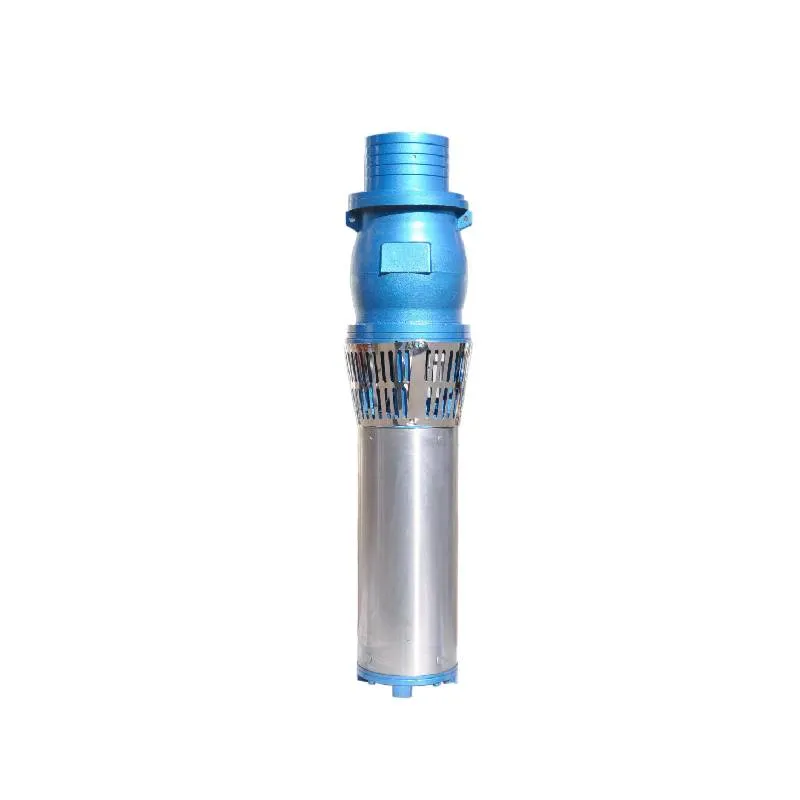Nov . 08, 2024 21:26 Back to list
cost of submersible pump
Understanding the Cost of Submersible Pumps Factors and Considerations
Submersible pumps play a crucial role in various applications, including agriculture, drainage, and sewage management. These pumps are designed to operate while submerged in fluid, making them particularly effective in moving water from deep wells or underground sources. However, understanding the cost structure of submersible pumps is essential for users and decision-makers to make informed choices. This article delves into the key factors influencing the cost of submersible pumps.
1. Type of Submersible Pump
The type of submersible pump is one of the primary determinants of its cost. There are various types, including
- Sewage Pumps Designed to handle wastewater containing solids and debris. These pumps are generally more robust and, therefore, more expensive than standard water pumps. - Deep Well Pumps Specifically engineered for extracting water from deep underground sources. The construction materials used must withstand high pressures, contributing to higher costs.
- Utility Pumps These are relatively simple and less expensive pumps used for general water transfer and dewatering.
Each type comes with its own set of features, capabilities, and price ranges. Accordingly, the intended application will significantly influence the choice and the investment required.
2. Build Quality and Materials
The materials used in constructing a submersible pump can significantly impact its cost. High-quality pumps are often made from stainless steel, bronze, or high-grade thermoplastic, which offer enhanced durability and resistance to corrosion. While these materials may increase the initial purchase price, they can lead to long-term savings by reducing maintenance costs and extending the pump's lifespan.
Conversely, pumps made from lower-quality materials may be cheaper upfront but can incur higher costs over time due to frequent repairs, replacements, and inefficiencies. Users must weigh the long-term benefits of investing in quality materials against their immediate budget constraints.
The power rating of submersible pumps, typically measured in horsepower (HP), also affects their cost. Higher-powered pumps are generally more expensive due to their ability to move larger volumes of water and deal with greater depths and pressures. However, efficiency is a significant consideration; more efficient pumps consume less energy, resulting in lower operational costs over time.
cost of submersible pump

Investing in a more energy-efficient pump may appear costly initially but can offer considerable savings in energy bills, especially in applications requiring continuous operation, such as agricultural irrigation or commercial water extraction.
4. Installation Costs
Beyond the purchase price, installation costs can add significantly to the overall expenditure of acquiring a submersible pump. Factors influencing installation costs include
- Depth of Installation The deeper the pump is installed, the more complex and costly the installation will be due to the need for specialized equipment and expertise.
- Site Conditions If the site poses challenges (such as rocky or muddy terrain), additional labor and equipment may be needed.
- Piping and Accessories Consideration must also be given to the cost of additional components like piping, valves, and control systems, which can cumulatively increase the total installation cost.
5. Maintenance and Operational Costs
Submersible pumps, like any mechanical equipment, require regular maintenance. Users should factor in these ongoing costs, including routine inspections, repairs, and possible parts replacement. A well-maintained pump will operate more effectively and last longer, but neglect can lead to costly breakdowns and replacements.
Additionally, the operational costs tied to energy consumption and water output should be assessed. Users should choose pumps based on their performance efficiency ratings to minimize these expenses.
Conclusion
In conclusion, the cost of submersible pumps is influenced by multiple factors, including type, materials, power rating, installation logistics, and ongoing maintenance. Users should take a holistic approach when evaluating costs, balancing initial investments with long-term operational and maintenance expenses. By doing so, they can select a submersible pump that meets their needs while remaining economically viable over time. Making an informed decision can lead to enhanced performance, reliability, and overall satisfaction with the system implemented.
-
Submersible Water Pump: The Efficient 'Power Pioneer' of the Underwater World
NewsJul.01,2025
-
Submersible Pond Pump: The Hidden Guardian of Water Landscape Ecology
NewsJul.01,2025
-
Stainless Well Pump: A Reliable and Durable Pumping Main Force
NewsJul.01,2025
-
Stainless Steel Submersible Pump: An Efficient and Versatile Tool for Underwater Operations
NewsJul.01,2025
-
Deep Well Submersible Pump: An Efficient 'Sucker' of Groundwater Sources
NewsJul.01,2025
-
Deep Water Well Pump: An Efficient 'Sucker' of Groundwater Sources
NewsJul.01,2025
-
 Submersible Water Pump: The Efficient 'Power Pioneer' of the Underwater WorldIn the field of hydraulic equipment, the Submersible Water Pump has become the core equipment for underwater operations and water resource transportation due to its unique design and excellent performance.Detail
Submersible Water Pump: The Efficient 'Power Pioneer' of the Underwater WorldIn the field of hydraulic equipment, the Submersible Water Pump has become the core equipment for underwater operations and water resource transportation due to its unique design and excellent performance.Detail -
 Submersible Pond Pump: The Hidden Guardian of Water Landscape EcologyIn courtyard landscapes, ecological ponds, and even small-scale water conservancy projects, there is a silent yet indispensable equipment - the Submersible Pond Pump.Detail
Submersible Pond Pump: The Hidden Guardian of Water Landscape EcologyIn courtyard landscapes, ecological ponds, and even small-scale water conservancy projects, there is a silent yet indispensable equipment - the Submersible Pond Pump.Detail -
 Stainless Well Pump: A Reliable and Durable Pumping Main ForceIn the field of water resource transportation, Stainless Well Pump has become the core equipment for various pumping scenarios with its excellent performance and reliable quality.Detail
Stainless Well Pump: A Reliable and Durable Pumping Main ForceIn the field of water resource transportation, Stainless Well Pump has become the core equipment for various pumping scenarios with its excellent performance and reliable quality.Detail
